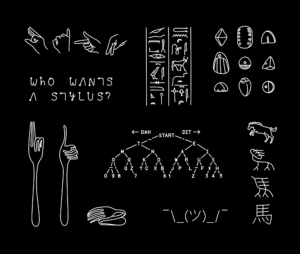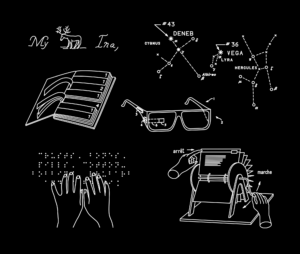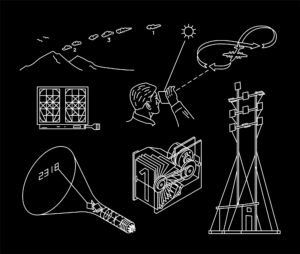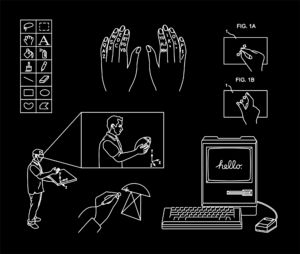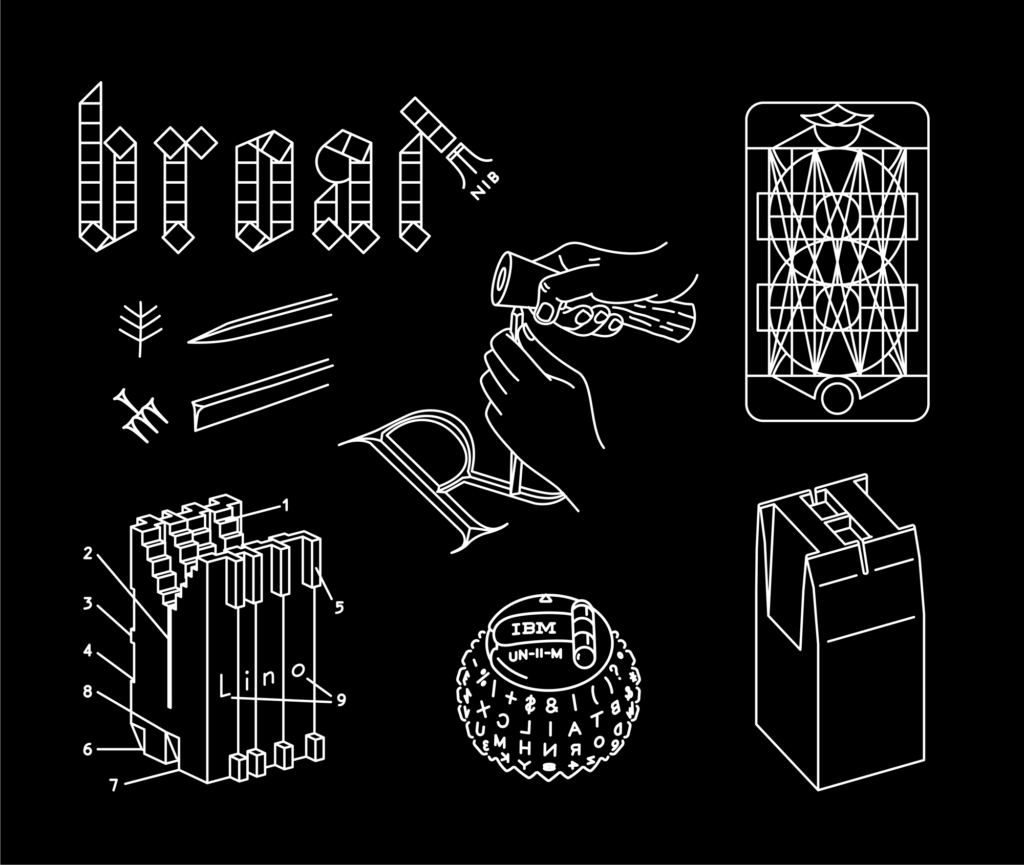
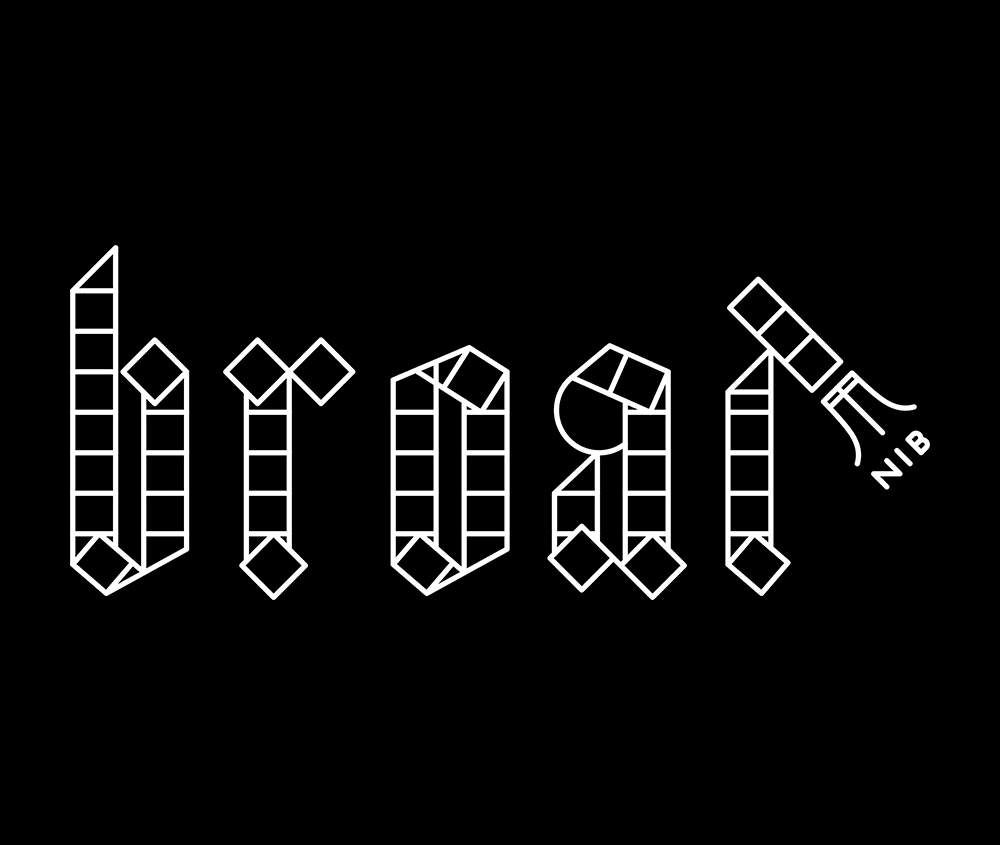
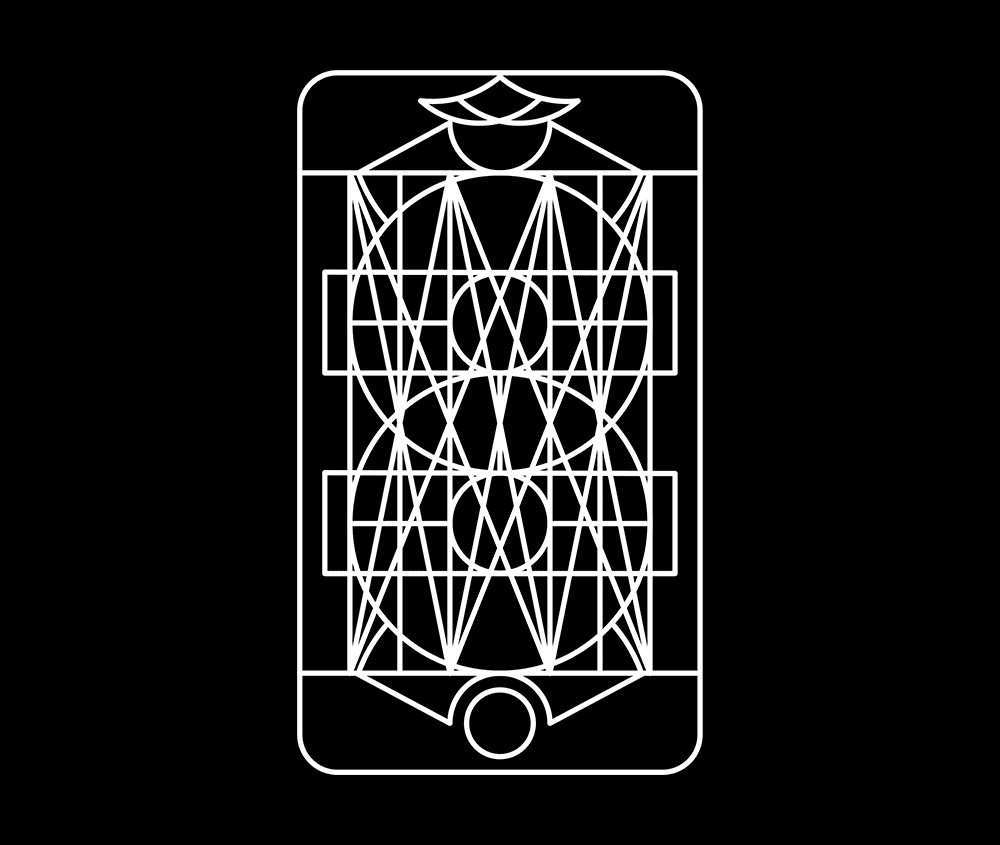
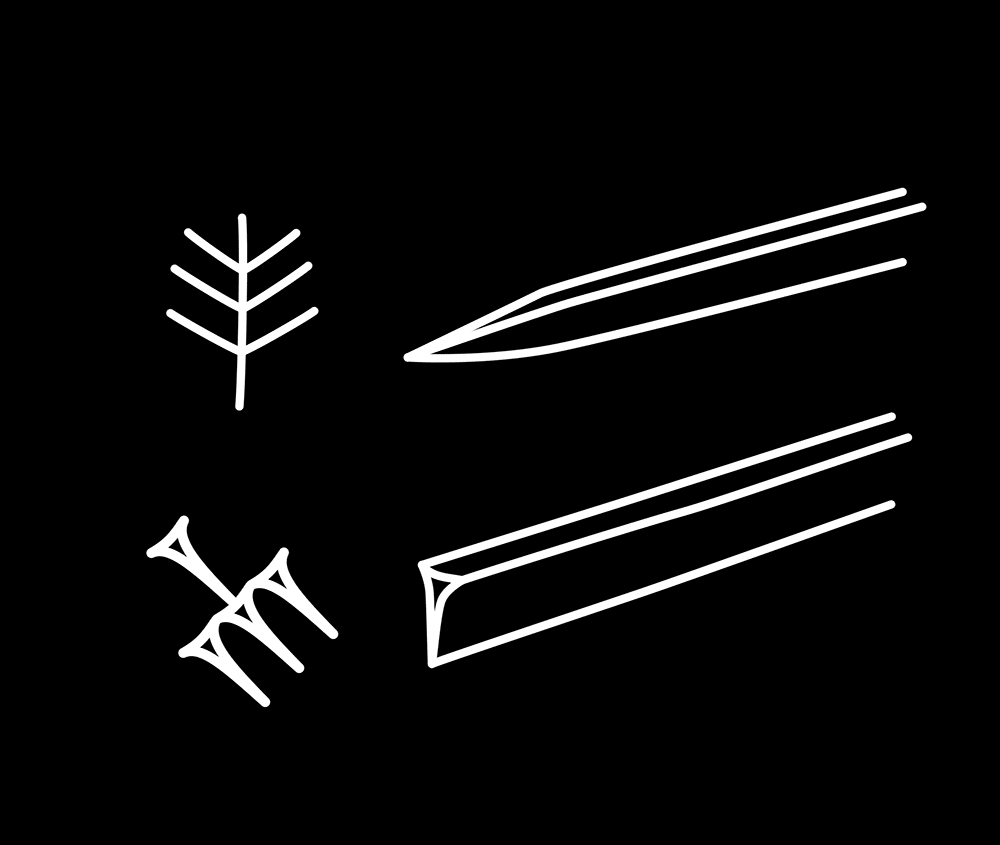
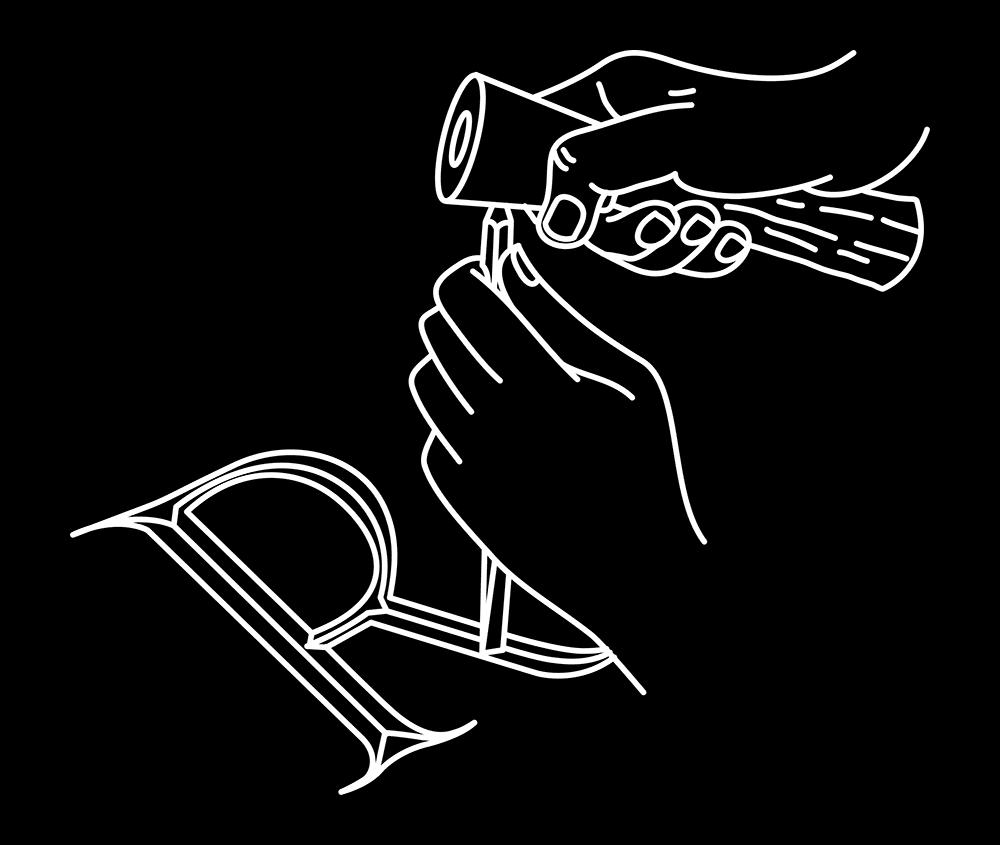
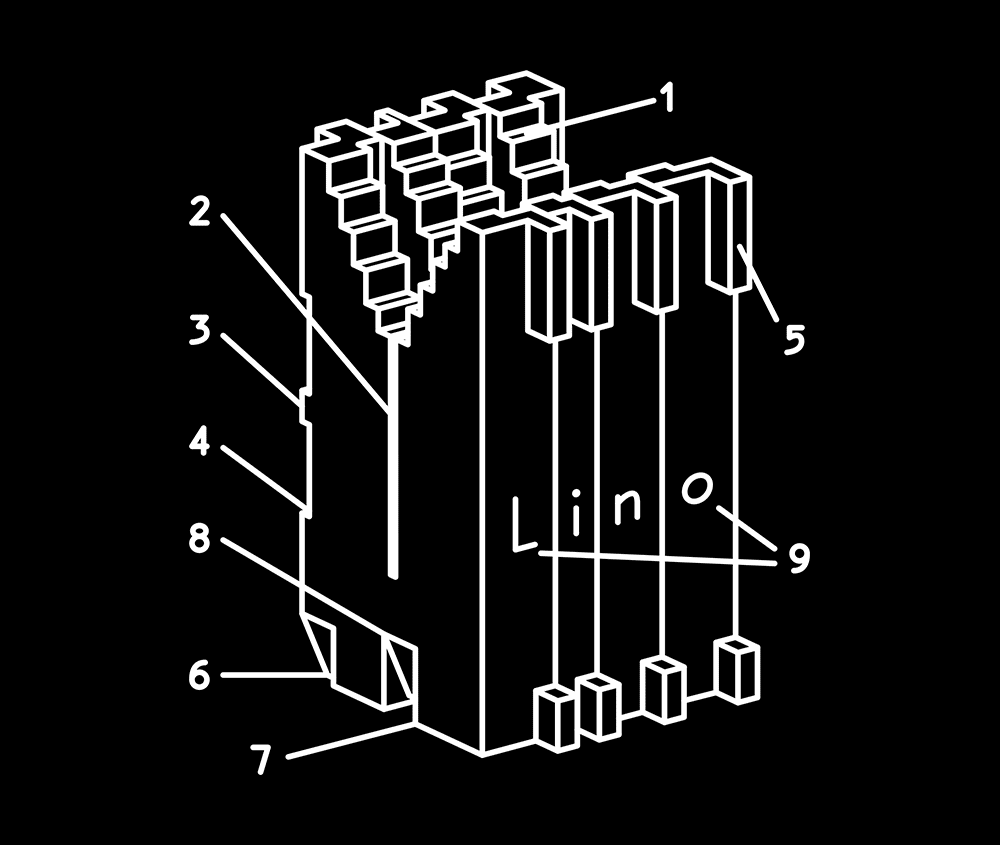
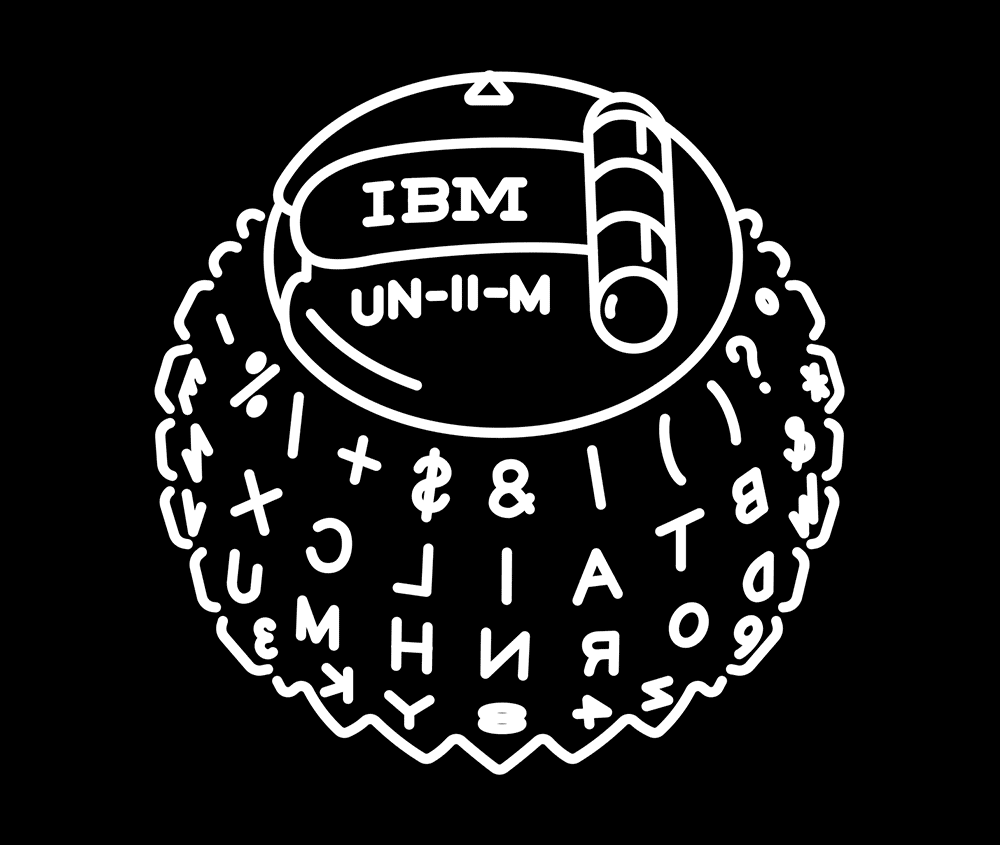
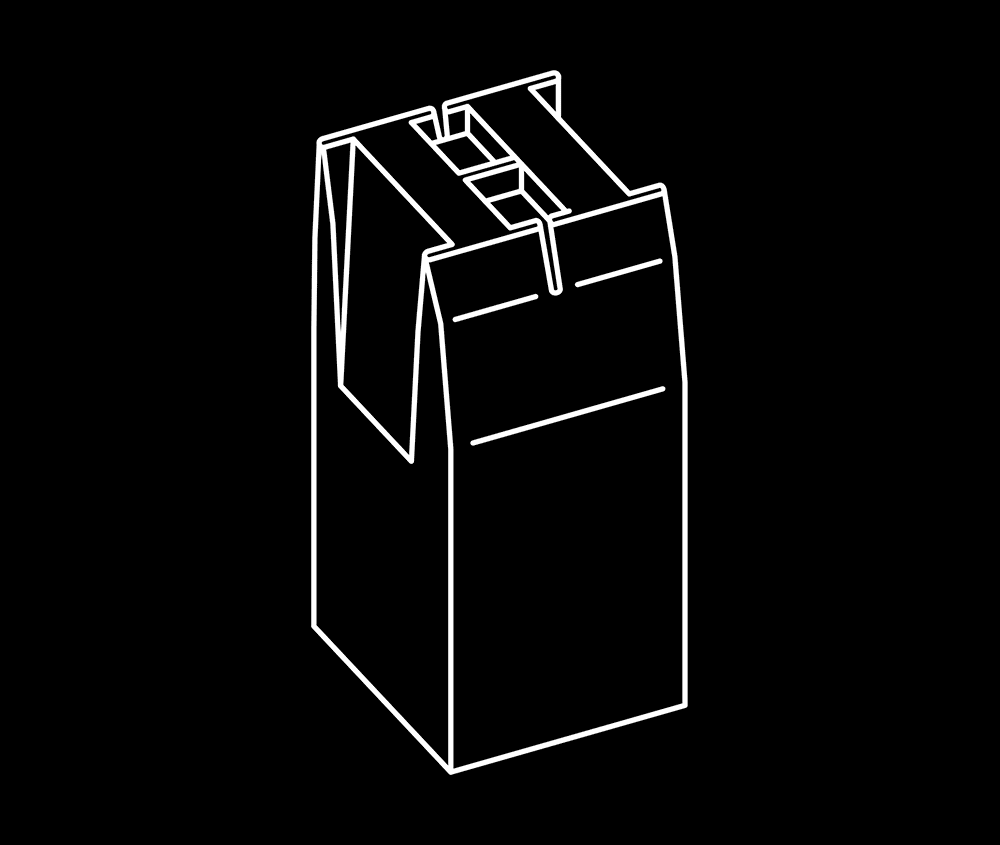
Jürg Lehni & Jenny Hirons, A Taxonomy of Communication, 2016
Broad Nib Pen Calligraphy with Gothic Writing
Letterforms by Albrecht Dürrer, a painter, printmaker and theorist of the German Renaissance. It depicts his system to establish a geometric principle behind the construction of gothic letterforms based on squares.
Source of Letterforms: Of the Just Shaping of Letters, by Albrecht Dürer, 1525
Plaque Découpée Universelle
Proposal of a universal lettering guide for a system of alphanumerical letters, invented and patented in the US by Joseph A. Davis in 1876, and sold in Paris at the 1978 Exhibition Universelle, and elsewhere.
Cuneiform stylus
Drawing comparing pointed stylus with wedged stylus used in cuneiform writing.
Stone Carving of Roman Letter
A hand using chisel and hammer to carve the roman letter R.
The explanation proposed by Father Edward Catich in his 1968 book The Origin of the Serif is now broadly but not universally accepted: the Roman letter outlines were first painted onto stone, and the stone carvers followed the brush marks which flared at stroke ends and corners, creating serifs. Another theory is that serifs were devised to neaten the ends of lines as they were chiseled into stone.
Linotype Matrices
Four matrices from the linotype machine, spelling out the word LINO. The machine assembles matrices, which are molds for the letter forms, in a line. The assembled line is then cast as a single piece, called a slug, of type metal in a process known as “hot metal” typesetting. The matrices are then returned to the type magazine from which they came, to be reused later. This allows much faster typesetting and composition than original hand composition in which operators place down one pre-cast metal letter, punctuation mark or space at a time.
IBM Selectric typewriter type ball
Instead of the “basket” of individual typebars that swung up to strike the ribbon and page in a traditional typewriter, the Selectric had a type element (frequently called a “typeball”, or more informally, a “golf ball”) that rotated and pivoted to the correct position before striking. The type element could be easily changed so as to print different fonts in the same document, resurrecting a capability that had been pioneered by the Blickensderfer typewriter 60 years before. The Selectric also replaced the traditional typewriter’s moving carriage with a paper roller (“platen”) that stayed in position while the typeball and ribbon mechanism moved from side to side.
Punchcutting
A punch for the letter H.
